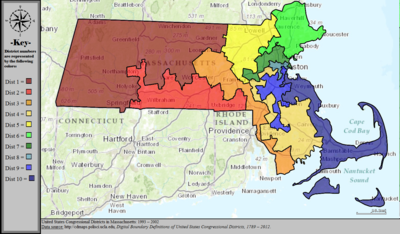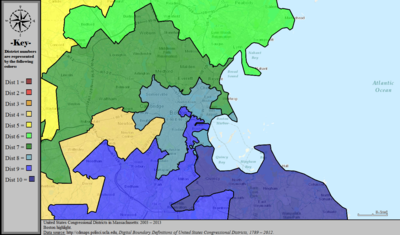
Interactive map version
Massachusetts is currently divided into 9 congressional districts, each represented by a member of the United States House of Representatives. After the 2010 census, the number of seats in Massachusetts was decreased from 10 to 9, due to the State's low growth in population since the year 2000. This mandatory redistricting after the 2010 census eliminated Massachusetts's 10th congressional district, as well as causing a major shift in how the state's congressional districts are currently drawn.































